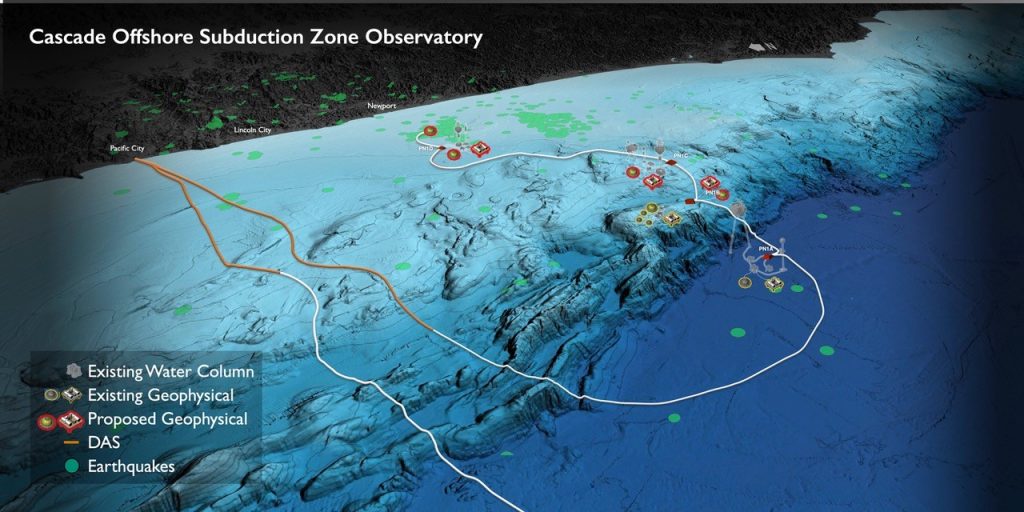Scientists and engineers from the UW School of Oceanography, Department of Earth and Space Sciences and the Applied Physics Lab, along with partners at Scripps Institution of Oceanography, recently were awarded more than $10 million to build an underwater observatory in the Cascadia subduction zone. The funding comes from the National Science Foundation and aligns with larger efforts to better understand subduction zones more broadly.
Subduction zones are found around the world where tectonic plates collide. They are capable of producing massive earthquakes – in some cases, magnitude 9.0 and greater – with catastrophic consequences. The team of researchers will focus on the Cascadia subduction zone, whose most recent substantial earthquake was in 1700. Not only did the ground shake violently during that event, but it also unleashed a deadly tsunami. Although no one knows when, a major earthquake will happen again and have an enormous impact on life and property in the Pacific Northwest.
In this project – named “Creating an Offshore Subduction Zone Observatory in Cascadia (COSZO) with the Ocean Observatories Initiative Regional Cabled Array” – researchers and engineers will deploy numerous geohazard sensing instruments, including seismic sensors and seafloor pressure gauges, ultimately producing real-time data to shed light on subduction zone activity. The pressure gauges will be secured directly to the seafloor, many with the ability to measure pressure changes from the seafloor moving up or down within “a millimeter over a year in a thousand meters of water,” according to Wilcock. The seismometers and pressure gauges can also enhance the capabilities of early warning systems, such as ShakeAlert for earthquakes, and for tsunamis.

More information about projects related to the Cascadia subduction zone:
OOI Regional Cabled Array
Early Warning Cascadia Offshore System